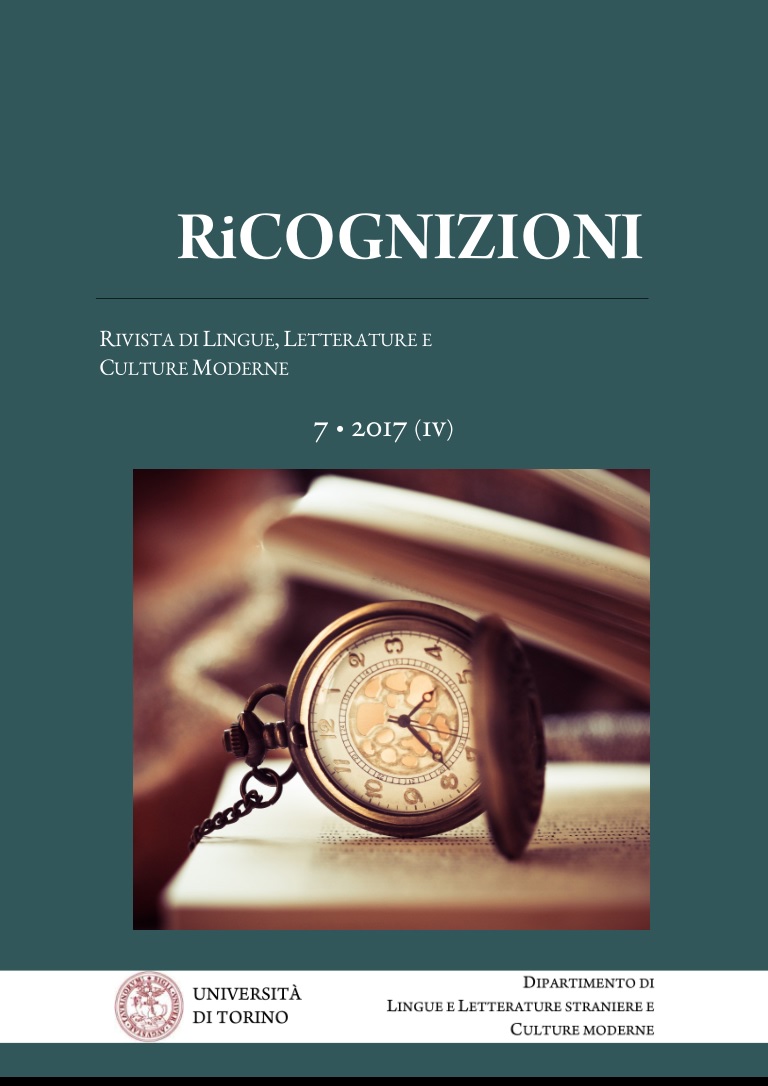Horace – La quête d’un idéal poétique ou l’énigme du refus ?
DOI:
https://doi.org/10.13135/2384-8987/2099Parole chiave:
Horace, Augustan literature, Poetic forms, Poetic fashion, Ideal Model of PoetryAbstract
In his attempt to clarify the meaning of Horace’s hemistich nil scribens ipse docebo (Ars, 306), the author of this paper considers this line as a particular form of the recusatio motif, which appeared very frequently in Augustan poetry. The peculiarity of this motif derives from the fact that the above mentioned Horatian phrase has an apparently paradoxical character, not to speak of some self-ironical connotations that are suggested by the present participle form scribens.
The author proposes to identify the essential meanings contained in the analysed line from a more general point of view, that is, in the context and the perspective provided by the entire Horatian corpus.
This corpus can be described, through an investigation both chronological and thematic, as a space of plurality and multiplicity of poetic choices, a space of subtle refusal and subsequently of acceptance (implicit or explicit) of various poetic forms, fashionable or not, from the point of view of an ideal model of poetry, supreme and therefore classic. The present research would have, in this case, the right to be considered as a legitimate reconstruction of Horace’s poetic itinerary, certainly representative for Augustan literature, for its classicism, and for Latin spirituality in general.Riferimenti bibliografici
Cartault, A. (1899). Étude sur les Satires d’Horace, Paris.
Courbaud, E. (1914). Horace, sa vie et sa pensée à l’époque des épîtres. Étude sur le premier livre, Paris.
Dahlmann, H. (1970). Kleine Schriften, Hildesheim – New York.
Dams, P. (1970), Dichtungskritik bei nachaugusteischen Dichtern, Marburg – Lahn.
Grimal, P. (1968). Essais sur l’Art Poétique d‘ Horace, Paris.
Grimal, P. (1965). Horace, Paris.
Grube, G. M. A. (1965). The Greek and Roman Critics, London.
Hering, Wolfgang (1979). Die Dialektik von Inhalt und Form bei Horaz. Satiren Buch I und Epistula ad Pisones. Berlin.
Hus, A. (1965). Docere et les mots de la famille de docere, Paris.
Immisch, O. (1932). Horazens Epistel über die Dichtkunst, Leipzig.
Kiessling, A. (1930). Q. Horatius Flaccus. Oden und Epoden. Erklärt von Adolf Kiessling. Siebente Auflage, besorgt von Richard Heinze, Berlin.
La Drière, C. (1939), Horace and the Theory of Imitation, in « American Journal of Philology », vol. LX, p. 288–300.
Marchesi, C. (1978). Scritti minori di filologia e di letteratura. In appendice Religiosità di Marchesi, di Pietro Ferrarino. Vol. II, Firenze.
Merguet, H. (1905), Handlexicon zu Cicero, Leipzig.
Nisbet, R. G. M., Hubbard, M. (1987). A Commentary on Horace : Odes, Book II, Oxford.
Norden, E. (1966). Kleine Schriften zum klassischen Altertum. Herausgegeben von Bernhard Kytzler. Berlin.
Pascal, C. (1920). Scritti varii di letteratura latina, Torino.
Pippidi, D. M. (1984). Parerga. Écrits de Philologie, d’Épigraphie et d’Histoire ancienne, București-Paris.
Pöschl, V. (1981). Bemerkungen zu den Horazoden III 7-12, in Letterature comparate. Problemi e metodo. Studi in onore di Ettore Paratore. Volume secondo : Letterature antiche, Bologna.
Ronconi, A. (1972). Interpretazioni letterarie nei classici, Firenze.
Rostagni, A. (1937). Orazio, Arpino.
Rostagni, A. Arte poetica di Orazio, Edizione minore, Torino, s. a.
Thill, A., Alter ab illo. (1979). Recherches sur l’imitation dans la poésie personnelle à l’époque augustéenne, Paris.
Williams, G. (1968). Tradition and Originality in Roman Poetry, Oxford.
Wimmel, W. (1960). Kallimachos in Rom. Die Nachfolge seines apologetischen Dichtens in der Augusteerzeit, Wiesbaden.
##submission.downloads##
Pubblicato
Come citare
Fascicolo
Sezione
Licenza
Gli autori che pubblicano su questa rivista accettano le seguenti condizioni:- Gli autori mantengono i diritti sulla loro opera e cedono alla rivista il diritto di prima pubblicazione dell'opera, contemporaneamente licenziata sotto una Licenza Creative Commons - Attribuzione che permette ad altri di condividere l'opera indicando la paternità intellettuale e la prima pubblicazione su questa rivista.
- Gli autori possono aderire ad altri accordi di licenza non esclusiva per la distribuzione della versione dell'opera pubblicata (es. depositarla in un archivio istituzionale o pubblicarla in una monografia), a patto di indicare che la prima pubblicazione è avvenuta su questa rivista.
- Gli autori possono diffondere la loro opera online (es. in repository istituzionali o nel loro sito web) prima e durante il processo di submission, poiché può portare a scambi produttivi e aumentare le citazioni dell'opera pubblicata (Vedi The Effect of Open Access).








